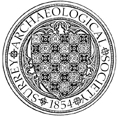Sayers Croft, Ewhurst
Excavation by A Guinness of SCAU for the Community Archaeology Project, involving the investigation of two former air-raid shelters on the site. The shelters had been partially demolished and the remains buried, with the excavation being an opportunity to establish their correct locations and state of preservation, while providing a training platform for over 100 local children to learn basic excavation techniques, learn about the archaeological discovery process, and handle real artefacts from the Second World War.


